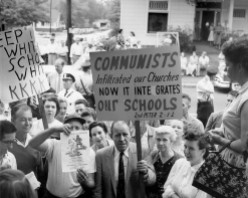
[This article is a revised and expanded edition of “In Short, What is Critical Race Theory?”]
In 1989, when I was a boy of eleven years—born into an all-White church, attending an all-White elementary school in all-White town, well on my way to believing that racism was in the past, that America had achieved equality, and that inferiority of racial circumstance simply reflected inferiority of racial “culture”—more than twenty legal scholars met in Madison, WI to discuss how we ended up here and what should be done about it. This “Workshop” was titled “New Developments in CRT,” the first formal use of the now oft maligned acronym.[1]
1. Civil Rights Retrenchment: Why?
Just over twenty years following the passage of the 1964 Civil Rights Act, 1965 Voting Rights Acts, and the 1968 Fair Housing Act, the stated goals of this historic legislative package seemed further and further out of reach. Kimberlé Crenshaw, who spearheaded the first CRT Workshop along with Neil Gotanda and Stephanie Phillips, was sadly able to report in 1988 that,






